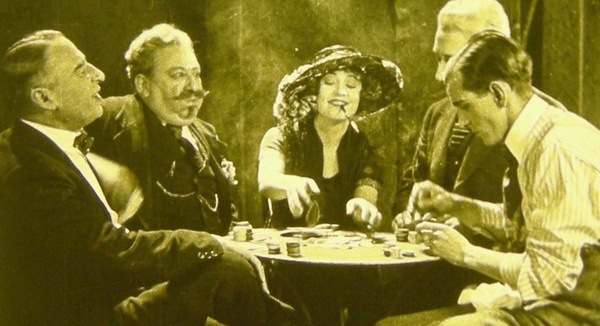In a rather amazing discovery, the New Zealand Film Archive and the National Film Preservation Foundation (NFPF) has announced that the first 30 minutes of one of the first films worked on by Alfred Hitchock has been found. Made in 1923, The White Shadow featured the first credited efforts of the then-24-year old Hitchcock, who served as the writer, assistant director (to Graham Cutts), editor, and production designer. It made its way to New Zealand in 1989 and has been languishing there, like some pile of unwanted nitrate prints. (Come on, we’ve all got those lying around.)
While not one of his own directorial efforts, The White Shadow is being seen as a “missing link” in Hitchcock’s early career. A melodrama about a good twin and a bad twin, both played by Betty Compson, it’s evidence of how other aspects of Hitchcock’s efforts and creativity in filmmaking came to make him one of the most celebrated directors — and storytellers — of all time. At that point in his career, he had done “some writing,” but was still figuring out everything else that making a movie entails.
So, how did a British film that was released in the United States end up in New Zealand and remain there for over 20 years? Tony Osborne, the grandson of a New Zealand projectionist named Jack Murtagh, came into possession of The White Shadow when it was first discovered among other delicate “nitrate materials” and brought it to NZ to put it an archive to protect it. Then, when NZ only had the money to restore its own vintage films, the NFPF got a grant to send an archivist to retrieve any American films. And that’s when everyone realized they had a lost Hitchcock film on their hands.
Another reason it collected dust for so many years was because it was labeled with a different title, “Twin Sisters.” Nitrate expert Leslie Lewis, who had identified two other reels for The White Shadow, said that she had no idea this new film was something connected to Alfred Hitchcock and treated it as just another dusty reel.
“… I put it on the table and I recognized the actors and the sets. I took dozens of photographs of each reel and then compared them [to the other two reels] and they belonged together.”
Makes you wonder what else we haven’t discovered yet and about the possibility of tons of missing pieces of cinematic gold.








Published: Aug 4, 2011 11:06 am